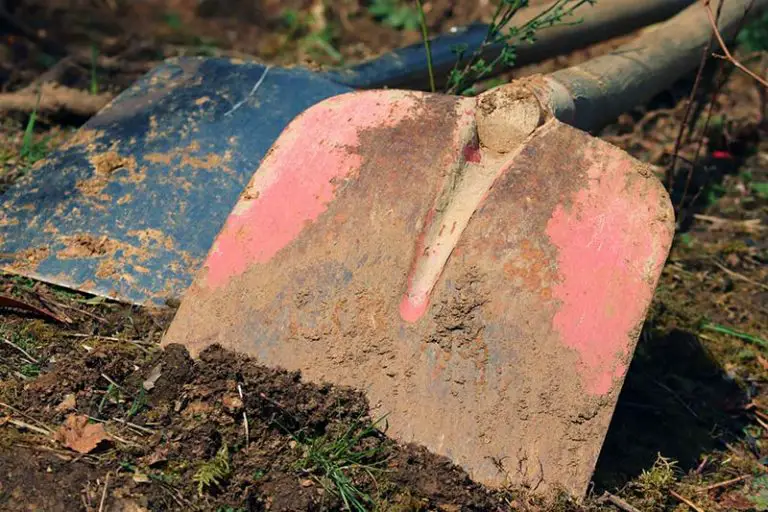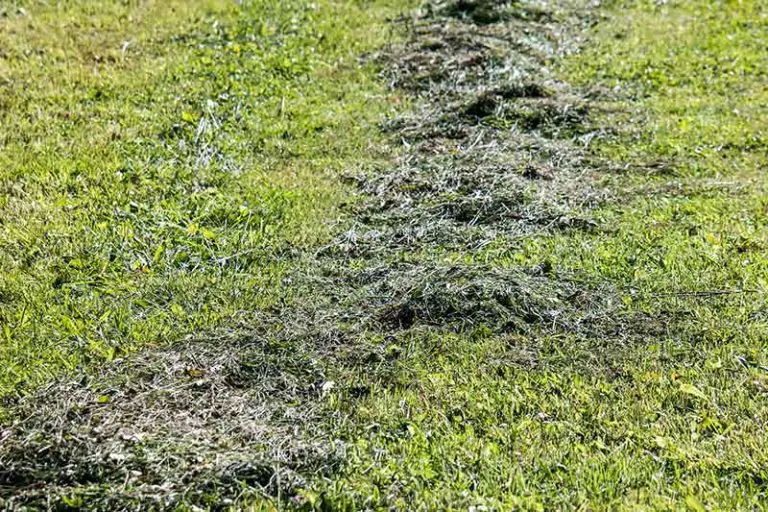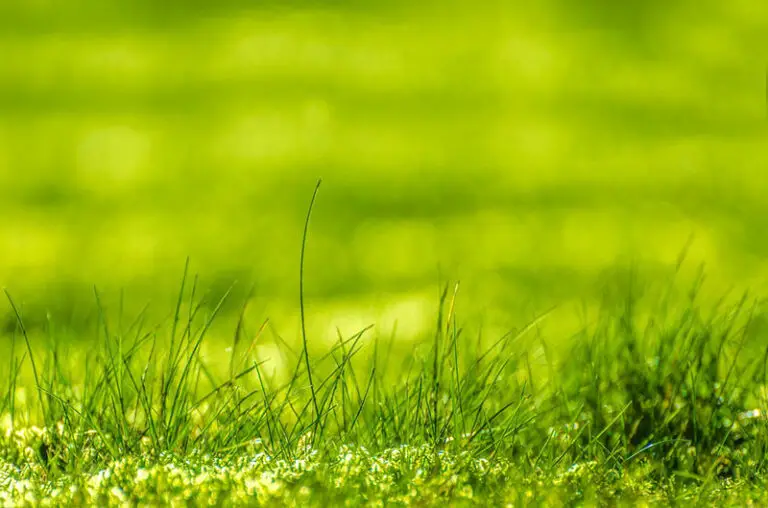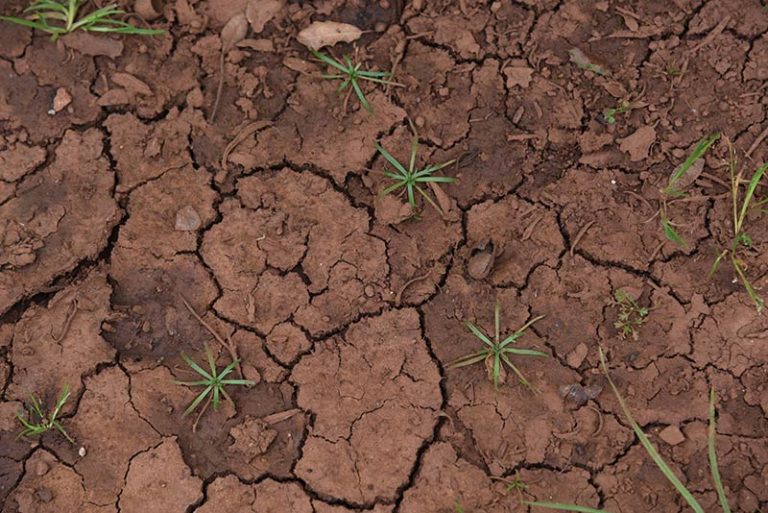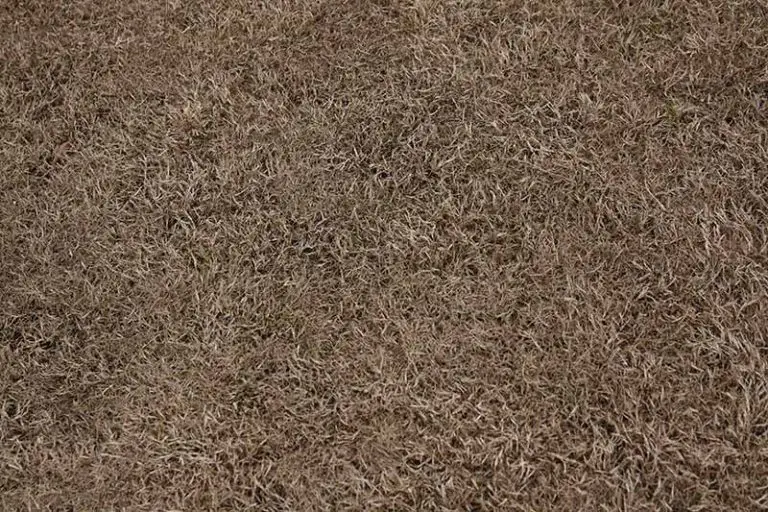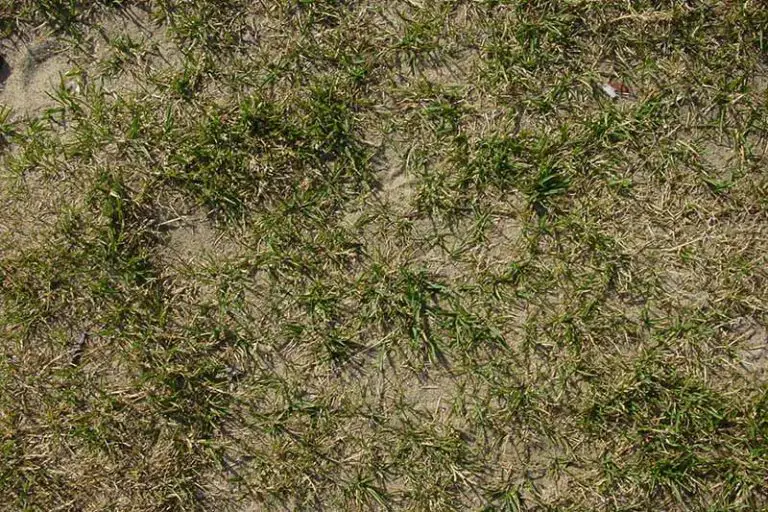11 Tips for a Greener Lawn
It goes without saying that a greener lawn full of thick lush grass is the goal of every proud homeowner. Not only is a thick green lawn more aesthetically pleasing, but thicker grass will also help to crowd out weeds on its own. Achieving this goal can be as simple as adjusting your usual lawn care practices to promote the health and color of your grass.
Effective methods to make grass green include fertilizing the grass, amending your soil pH, watering, mowing, and dethatching properly, and aerating and overseeding the lawn. It’s also important to keep up with weed control to maintain a healthier, greener lawn. Carrying out these regular practices in the right way at the right time is essential to see the best results.
How to Make Grass Green
1. Understand the Grass on Your Lawn
Before taking any other measures to make your grass green, the first crucial step is to understand the type of grass you’re trying to grow.
All grass species fall into two categories, being either cool-season grass or warm-season grass. You’ll have a much harder time keeping your grass green if you plant the wrong type of grass for your climate. As the names suggest, cool-season grasses are better suited to cool climates, while warm-season grasses are best for warmer regions.
If you live in the south or a transition region with typically warm temperatures, you should opt for a warm-season grass type. These grasses grow most vigorously in the summer when temperatures are between 75 and 90°F; they will stay green from spring to summer before turning brown when temperatures drop below 55°F. Warm-season grasses include:
- Bahiagrass
- Bermuda grass
- Carpet grass
- Centipede grass
- St. Augustine
- Zoysia grass
If you live in the north or cooler transition region, you should have a cool-season grass type. Cool-season grasses grow actively during the spring and fall when temperatures are around 65 to 80°F; growth slows down over the summer and winter. Cool-season grasses include:
- Bent grass
- Creeping red fescue
- Tall fescue
- Fine fescue
- Kentucky bluegrass
- Perennial and annual ryegrass
For all grass species, when conditions are unfavorable for their growth, the grass will turn brown and appear dead. However, brown grass is usually just an indication that your lawn is in a state of dormancy; it will green back up when conditions return to normal.
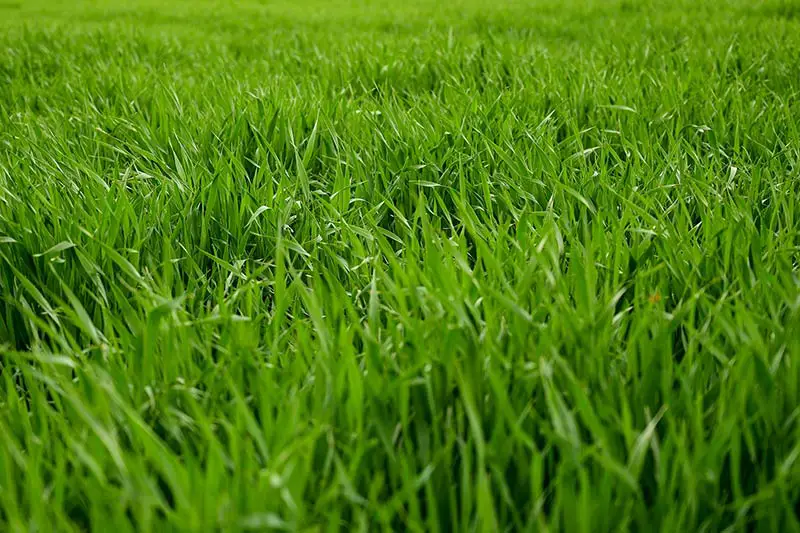
2. Understand Your Lawn’s Soil Type
Another aspect of your lawn to consider is your soil type. Different types of soil have different growing properties, and different grasses have particular preferences for certain soil types. You will get a greener lawn when your grass is growing in its preferred soil.
Soil types include sandy, clay-heavy, silty, and loamy soil. These soils are differentiated by their particle makeup. In general, the best soil for growing grass is loamy soil; loamy soil is a balance of each soil type, containing both sand and clay particles. This soil has the optimal characteristics to promote a greener lawn of any species of grass.
Sandy soil is naturally well-aerated and drains well, but has a harder time holding onto water and nutrients. The best grass for sandy soil is therefore a species that is drought tolerant with a deep root system. With a drought-tolerant species, it won’t be difficult to make grass green in a sandy lawn.
Clay-heavy soil, on the other hand, has excellent water and nutrient retention. However, clay soils drain poorly and are highly prone to compaction. These soils are regarded as the most challenging soil type for grass growing. With that said, you can take some measures to improve clay soil for a greener lawn.
3. Test Soil in Lawn
In order to grow green and thick, your grass needs a range of available nutrients in the soil. For grass to take them up, not only must the nutrients be present, but the soil must also have the correct pH. You can determine whether your lawn is in optimal growing conditions by conducting a soil test.
Firstly, a soil test will reveal the amount of nutrients currently present in your turf. Your grass requires three nutrients primarily, these being nitrogen (N), phosphorus (P), and potassium (K). Without the right amount of these nutrients, your grass will struggle to grow, losing its lush green color. The results of your soil test will inform you which of these nutrients your soil is lacking. From these results, you can then choose the best lawn fertilizer for your grass’ particular nutritional needs.
Secondly, the results of your soil test will also indicate the current pH level of your turf. Preferred pH levels can vary somewhat between grass types; however, most grasses require a neutral to slightly acidic pH level between 6.5 and 7.0 to grow properly. If the pH is incorrect, your grass will be unable to take up nutrients regardless of their abundance in the soil. You’ll therefore need to adjust your soil pH if it falls out of this optimal range to keep your grass green.
4. Fertilize Grass At Right Time with Best Fertilizer
As we’ve mentioned, the results of your soil test will indicate whether your lawn currently lacks any certain nutrients. You can use this information to pick a fertilizer with the best fertilizer ratio to replenish the missing nutrients in the soil.
In general, the best type of fertilizer for greener grass is a slow-release, organic fertilizer. While synthetic fertilizers work quickly to deliver their nutrients, they contain harsh chemicals that can harm the nearby plant and wildlife. Slow-release organic fertilizers, on the other hand, contain all-natural ingredients that fertilize your lawn gradually over a longer time. It’s therefore better for both the environment and the health of your lawn to use an organic fertilizer.
Timing is also a crucial element of fertilization. The best time to fertilize your lawn is during the period of most active growth for the grass species you’re growing. In other words, if you have a cool-season grass type, the best time to fertilize is during the spring and fall; if you have warm-season grass, you should instead fertilize from the spring throughout the summer. This ensures you’re delivering nutrients to your grass when it needs them the most. As a result, you’ll make your grass green and encourage it to maintain this color throughout the growing season.
5. Amend Soil pH if Necessary
Again, as we’ve discussed, your soil test will also reveal the current pH level of your lawn. If your soil test shows that the soil pH falls out of the recommended range of 6.5 to 7.0, you’ll need to amend this too.
A pH level higher than 7.0 means that soil is overly alkaline. To get it into the optimal range, you’ll need to add an acidifying material to lower pH; the most common material used for this purpose is sulfur. Conversely, a pH level lower than 6.5 indicates overly acidic soil; to raise a low soil pH, you’ll have to add an alkaline material like agricultural lime.
6. Water Grass Properly
Proper watering is a significant aspect of maintaining a greener lawn. Watering too much can be just as harmful as watering too little; you need to deliver the right amount of water at the right time to keep your grass green.
Most mature lawns will benefit from 1 to 1.5 inches of water per week, added in 1 to 2 weekly watering sessions. If you add this water in shorter, frequent watering sessions, it will only encourage your grass to grow shorter roots. You need to irrigate more deeply in less frequent sessions to encourage deep root growth. With that said, it may be necessary to add a little more water than this recommended amount when watering during the summer; this is a key practice to keep your lawn green in the summer heat.
Despite the aforementioned advice, the irrigation requirements are more particular when watering grass seed. For new grass seed, you must water the planting area twice daily during the weeks following seeding. It’s essential to keep the turf consistently moist over this period to encourage the establishment of your new seed. This will leave you with a greener lawn when your seedlings reach maturity.
The best time to water your lawn is during the early morning, between the hours of 6am and 10am. At this time, temperatures are cool, allowing your grass to take up the water before it’s lost to evaporation. Avoid watering your lawn during the middle of the day for this reason. You should also avoid watering your lawn at night, as this can encourage the development of fungal lawn disease.
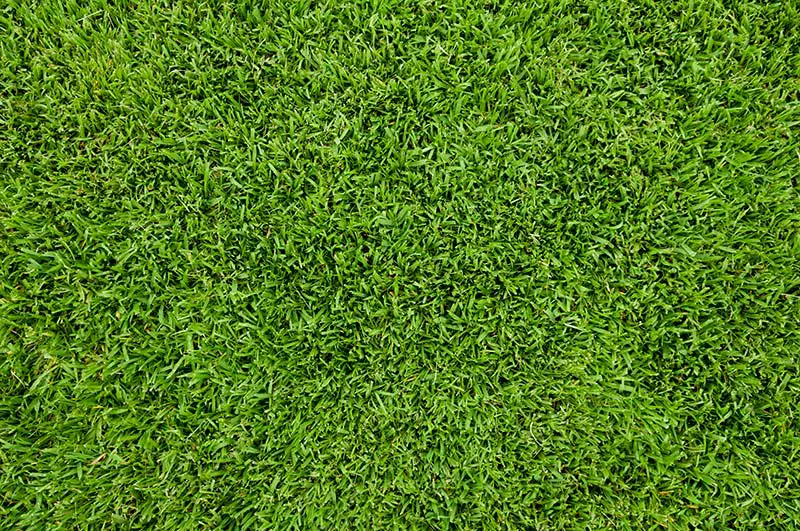
7. Mow Grass to Best Height
Mowing is another important element of your regular lawn care practices to promote the health of your grass. You need to mow your grass to the best height for its species, doing so with a well-maintained lawn mower.
The best height to cut grass varies between grass species. Find out the recommended cutting height range for your specific grass type and set your mower deck height accordingly. To maximize the health of your lawn, cut the grass to the tallest height in its recommended range; this will help your lawn to crowd out weed growth, while encouraging the grass to grow deeper roots. Mowing too short can lead to the grass becoming burnt or suffering from disease; both of these conditions will cause your grass to lose its green color.
On top of this, you must always mow your lawn with sharp mower blades. When you mow with dull or damaged mower blades, they have a ‘tearing’ effect on the grass. Not only will this leave you with an uneven lawn, it leaves the grass more vulnerable to disease and stress. Sharpen your mower blades every 20 to 25 hours of usage to keep them in optimal condition.
8. Dethatch Lawn As Necessary
Dethatching your lawn when necessary will make your lawn greener throughout the year. This practice is crucial to reduce the amount of thatch that may otherwise impact the health of your grass.
Thatch is the layer of dead organic material that lies between the soil surface and the upward growth of the grass. Over time, this matter naturally accumulates in your lawn. A small amount of thatch is actually beneficial for your grass’ health; however, when the thatch layer is too thick, it will stifle the grass. A thick thatch layer prevents water and nutrients from reaching the soil surface, blocking these essential elements from reaching your grass plants.
You’ll need to dethatch the lawn when the thatch layer reaches more than ½ inch in thickness. Some grass types are more prone to thatch build-up than others, including Bermudagrass, St. Augustine grass, zoysiagrass, and bluegrass; these grasses will require more frequent dethatching to stay green than other species. You can dethatch the lawn with a rake, mower attachment, or motorized dethatching machine. In severe cases, it may be more beneficial to scarify the lawn instead; this is essentially a deeper form of dethatching that tackles the thatch layer and the underlying soil.
9. Aerate Lawn As Necessary
Lawn aeration is another practice that will contribute to a greener lawn. Aeration is necessary to break up soil compaction, thus improving the movement of water, air, and nutrients in the turf.
From external factors like foot traffic and the weather, your soil will inevitably become compact over time. When soil becomes compacted, it pushes the soil particles closer together, pushing out air pockets in the turf. This hinders the movement of air, water, and nutrients around the roots of your grass. Without access to these elements, both the color and health of your grass will suffer.
There are a few different ways you can aerate your lawn. Although it’s possible to aerate with a pitchfork or aerating shoes, these methods can actually worsen compaction. The best method of aeration is core aeration; this process involves using a core aerator to pull plugs of soil from your lawn. The holes left behind from the process allow water and fertilizer to reach deeper in the soil and better circulate your grass’ roots.
10. Overseed with New Grass Seed
Overseeding is the process of adding new grass seed to an existing lawn. By overseeding your existing lawn with new seed, you can fill bare spots to make your grass green and thick.
The first step in overseeding your lawn is to choose the best grass seed for overseeding. This will be a grass type that is compatible with your climate and the existing grass on your lawn. Although it’s possible to overseed without aerating, it’s best practice to both aerate and overseed your lawn; aerating before overseeding will enhance the results of both processes.
11. Keep Up with Weed Control in Lawn
Any weeds on your lawn will steal the precious water and nutrients your grass plants need to stay green. You therefore need to keep up with preventative and post-emergent control measures to curb weed infestations for a greener lawn.
When it comes to killing established lawn weeds, there are a range of organic and chemical solutions at your disposal. It’s essential to first identify the weeds growing on your lawn before deploying the most appropriate measures of control. It’s possible to deal with many minor weed infestations by hand pulling; however, more extensive or aggressive weeds may require treatment with a chemical herbicide.
The best way to prevent weed growth in a lawn naturally is to maintain healthy, thick grass, as per the advice in this article. Another effective preventative measure is to treat your lawn with a pre-emergent herbicide; this is a type of weed killer designed to kill weed seeds before they germinate.

